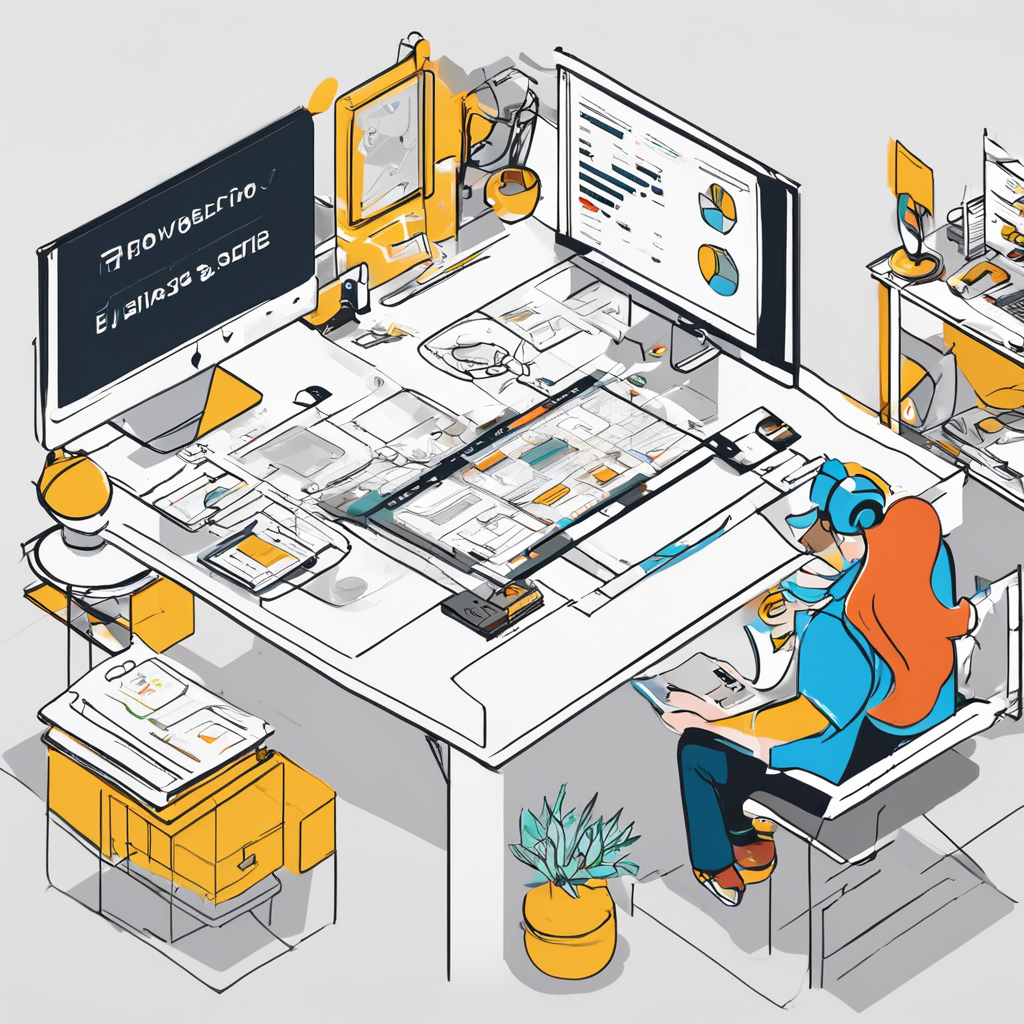As the world continues to embrace remote work, the demand for UX/UI designer jobs that can be done from anywhere has seen a significant rise. This shift in the job market has opened up opportunities for designers to work on exciting projects without being tied to a specific location. In this article, we will explore the growing trend of remote UX/UI designer jobs and how individuals can pursue this career path.
Remote UX/UI designer jobs offer flexibility and autonomy, allowing professionals to create user-friendly interfaces and experiences from the comfort of their own homes. With the advancement of technology and collaboration tools, remote designers can effectively communicate with team members and clients, ensuring projects are completed successfully.
One of the key benefits of working as a remote UX/UI designer is the ability to work with clients and companies from around the world. This global reach allows designers to gain diverse experiences and insights into different industries, ultimately enhancing their skills and portfolio.
When it comes to remote UX/UI designer jobs, companies are looking for individuals with a strong portfolio showcasing their design skills and expertise. Designers must demonstrate their ability to create visually appealing interfaces that prioritize user experience and functionality.
In addition to technical skills, remote UX/UI designers must possess excellent communication and collaboration abilities. Working remotely requires designers to effectively communicate their ideas, provide feedback, and work closely with team members to bring projects to life.
As the demand for remote UX/UI designer jobs continues to grow, individuals interested in pursuing this career path should consider enhancing their skills through online courses, workshops, and networking events. By staying updated on the latest design trends and tools, designers can position themselves as competitive candidates in the job market.
Remote UX/UI designers often work closely with product managers, developers, and other team members to create seamless digital experiences for users. Collaboration is key in remote work environments, and designers must be able to contribute their expertise while also being open to feedback and suggestions.
In the realm of remote UX/UI designer jobs, time management and organization are crucial skills. Designers must be able to juggle multiple projects, meet deadlines, and prioritize tasks effectively to ensure project success.
Remote UX/UI designers have the opportunity to work on a variety of projects, from mobile apps to websites to digital products. This diversity allows designers to expand their skill set and stay challenged in their work, ultimately leading to professional growth and development.
In the competitive landscape of remote UX/UI designer jobs, showcasing a strong online presence through social media, portfolio websites, and design communities can help designers stand out to potential employers. Building a personal brand and sharing design insights can attract new opportunities and collaborations.
Remote UX/UI designer jobs offer a unique blend of creativity, technical skills, and problem-solving abilities. Designers must be able to think critically about user needs, business goals, and design principles to create impactful and user-centric designs.
The remote nature of UX/UI designer jobs allows professionals to create their ideal work environment, whether that’s from a home office, a co-working space, or even while traveling. This flexibility empowers designers to find a work-life balance that suits their lifestyle and preferences.
In the fast-paced world of UX/UI design, staying curious and adaptable is essential for remote designers. Embracing new technologies, design trends, and methodologies can help designers stay ahead of the curve and deliver innovative solutions to clients and users.
Remote UX/UI designers often collaborate with cross-functional teams to brainstorm ideas, conduct user research, and iterate on designs based on feedback. This collaborative approach ensures that designs are user-centered and meet the needs of both clients and end-users.
For individuals considering a career in remote UX/UI design, networking with industry professionals, attending virtual conferences, and participating in online design challenges can help build connections and expand opportunities in the field. Building a strong professional network can lead to job referrals and collaborations with top companies.
Remote UX/UI designer jobs require a blend of creativity, technical skills, and empathy for users. Designers must be able to put themselves in the shoes of the end-user and create designs that are intuitive, accessible, and visually appealing.
In the dynamic world of remote UX/UI designer jobs, continuous learning and skill development are essential for staying relevant and competitive. Designers should seek out mentorship opportunities, attend workshops, and pursue certifications to enhance their knowledge and expertise in the field.
As remote work becomes more prevalent in the design industry, the demand for skilled UX/UI designers who can work effectively in virtual environments continues to rise. Designers who can adapt to remote work settings and deliver high-quality designs will have a competitive edge in the job market.
In conclusion, remote UX/UI designer jobs offer a wealth of opportunities for creative professionals to work on exciting projects, collaborate with diverse teams, and make a meaningful impact on digital experiences. By honing their skills, staying connected with the design community, and embracing remote work practices, designers can thrive in this evolving field and shape the future of user-centric design.
